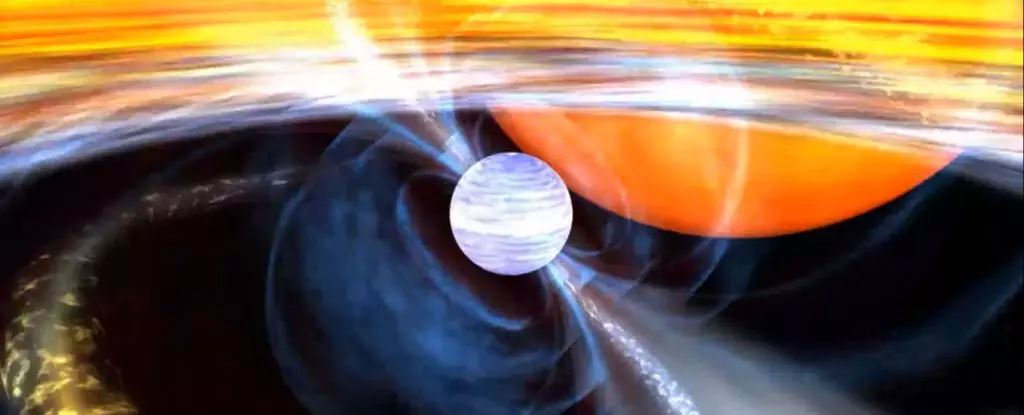The universe is a stage of breathtaking phenomena, and a recent revelation brings to light the stellar performance of a neutron star located a staggering 27,400 light-years away. Within the binary system known as 4U 1820-30, researchers have found a neutron star that spins at a remarkable speed of 716 rotations per second. This discovery, spearheaded by a team led by astrophysicist Gaurava Jaisawal from the Technical University of Denmark, raises significant questions about our understanding of the maximum spin rates of neutron stars and could potentially rewrite parts of stellar evolution theories.
Neutron stars represent a terminal phase in the life cycle of massive stars, often weighing between 1.1 to 2.3 times that of our Sun. These remnants emerge following a supernova explosion, where the star’s outer layers are expelled, and the core collapses under its own gravity, creating an incredibly dense object compressed into a sphere measuring only 20 kilometers in diameter. The extraordinary density of neutron stars makes their study critical for understanding the behaviors of matter under extreme conditions.
While the grandiosity of the 4U 1820-30 neutron star’s spin captures attention, it is equally important to comprehend the broader implications this has within the astrophysical community. Jaisawal and his colleagues were initially focused on investigating thermonuclear explosions emanating from the system. Their methodology involved the use of NASA’s Neutron Star Interior Composition Explorer (NICER), an advanced X-ray telescope mounted on the International Space Station. It was during the analysis of thermonuclear blasts, occurring sporadically from this binary system, that they unearthed an unusual oscillation with a pulse frequency precisely at 716 Hertz.
This oscillation suggests that the neutron star might even function as an X-ray pulsar—the fastest yet identified—resulting from thermonuclear explosions. If validated, this finding places 4U 1820-30 in the same league as PSR J1748-2446ad, a radio pulsar renowned for its remarkable spin rates, while also emphasizing the necessity for further observational studies to consolidate these results.
The nature of the neutron star’s behavior can be vividly compared to a cosmic dance fueled by intense thermonuclear outbursts. Each of these explosions sees the neutron star brightening to an astonishing level—up to 100,000 times more luminous than the Sun. Jérôme Chenevez, also part of the Danish research group, highlights the violent nature of these events: “By studying them, we glean vital information regarding the life cycles of binary star systems and the synthesis of elements in the cosmos.”
The binary system’s structure is crucial to understanding how these processes occur. The neutron star and its companion white dwarf are in tight orbit, completing a full rotation every 11.4 minutes. This close proximity allows for a process known as mass accretion, where the neutron star strips material from its dwindling companion. The accumulated mass undergoes extreme compression and heating, resulting in periodic explosive events that reveal a great deal about the mechanisms at play in such stellar environments.
The discovery surrounding the 4U 1820-30 neutron star could have profound implications for astrophysics. Confirming that it is indeed the fastest nuclear-powered pulsar may pave the way for new methods to investigate neutron stars under extreme conditions. This knowledge could help scientists understand not only the behavior of neutron stars but also the physics of matter at nuclear densities.
Furthermore, the insights gained from this research could enlighten our understanding of how stars evolve and the processes governing their life cycles. By examining neutron stars like 4U 1820-30, astronomers stand to learn about the birth and death of cosmic entities, leading to better comprehension of elements’ formation and distribution throughout the universe.
As space exploration ventures ever deeper into the cosmos, discoveries such as that of the 4U 1820-30 neutron star remind us of the mysteries still waiting to be unlocked. This particular star’s remarkable spinning speed not only challenges existing theories but also invites a re-examination of our cosmic knowledge base. As astronomers continue to gather data and analyze the stellar behaviors within these binary star systems, the unfolding narrative captures the imagination and curiosity of scientists and enthusiasts alike, always eager for the next revelation in the vast theater of the universe.


Leave a Reply